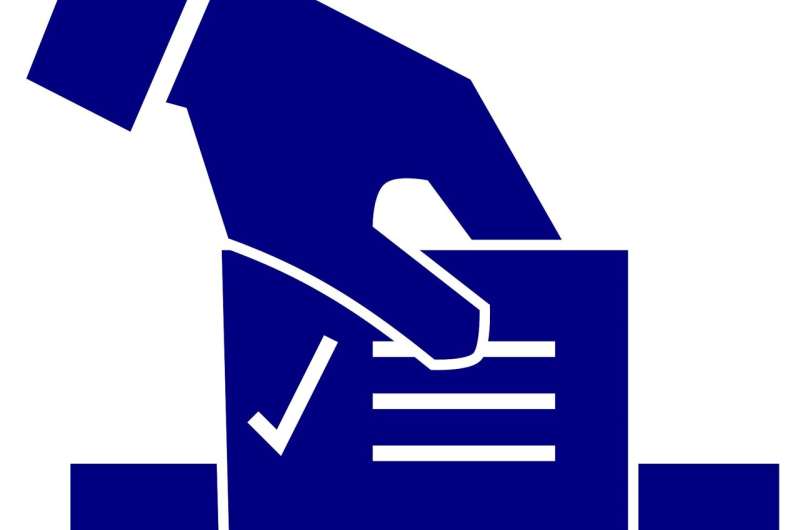New study finds connection between long-standing gender and racial gaps in voting for Democrats

The persistent gender gap in voting for Democrats versus Republicans is, in part, because a higher proportion of women than men voters are Black and because Black voters have historically voted overwhelmingly Democratic, according to a new study by a team of sociologists.
"We've long known about both gender and racial gaps in voting, but the relationship between the two is less clear," says Dean of Social Science at NYU Abu Dhabi Paula England, the lead author of the paper, which appears in the Proceedings of the National Academy of Sciences. "These findings show the fact that a higher percentage of women than men voters are Black explains about a quarter of the gender gap in voting Democratic."
Women have voted for the Democratic candidate more than men have in each U.S. presidential election since 1980. Notably, previous research has shown that Black men have disproportionately high rates of death, incarceration, and disenfranchisement due to criminal convictions—disparities that reduce the share of men voters who are Black and lead to a higher percentage of Black voters who are women relative to other racial groups.
The PNAS study, which also included Michael Hout, an NYU sociology professor, and Karyn Vilbig and Kevin Wells, NYU doctoral students, sought to better understand the gender-race dynamic as a factor in partisan voting gaps.
To do so, the authors examined General Social Survey (GSS) data from the 1980 through the 2016 presidential elections, replicating this analysis with data from the American National Election Surveys.
Their analysis showed that the gender difference in racial composition explains 24% of the gender gap in voting Democratic. In other words, given that approximately 90% of Black voters back Democrats—a much higher proportion relative to other groups—the fact that a higher percentage of women than men voters is Black tilts women's votes toward Democrats.
"There is of course a gender gap in voting among White voters, but nearly one-quarter of the overall gender gap arises solely because of the difference between men and women voters in their racial composition," says England, also a professor of sociology at NYU.
To rule out another factor that may explain the gender gap, the researchers also studied income. Specifically, among unmarried voters, they looked to see if the fact that single women are poorer than single men was a reason that women are more likely to vote more Democratic.
In fact, the gender gap in voting Democratic was especially large among those who are unmarried. However, while unmarried women are poorer than unmarried men, lower-income voters vote only slightly more Democratic than more affluent voters.
"No matter how we measured income, controlling for it did not reduce the gender gap," the authors write. "One key factor in the gender gap is racial composition."
More information: England, Paula, Part of the gender gap in voting for Democrats arises because a higher proportion of women than men voters are Black, Proceedings of the National Academy of Sciences (2023).
Journal information: Proceedings of the National Academy of Sciences
Provided by New York University




















